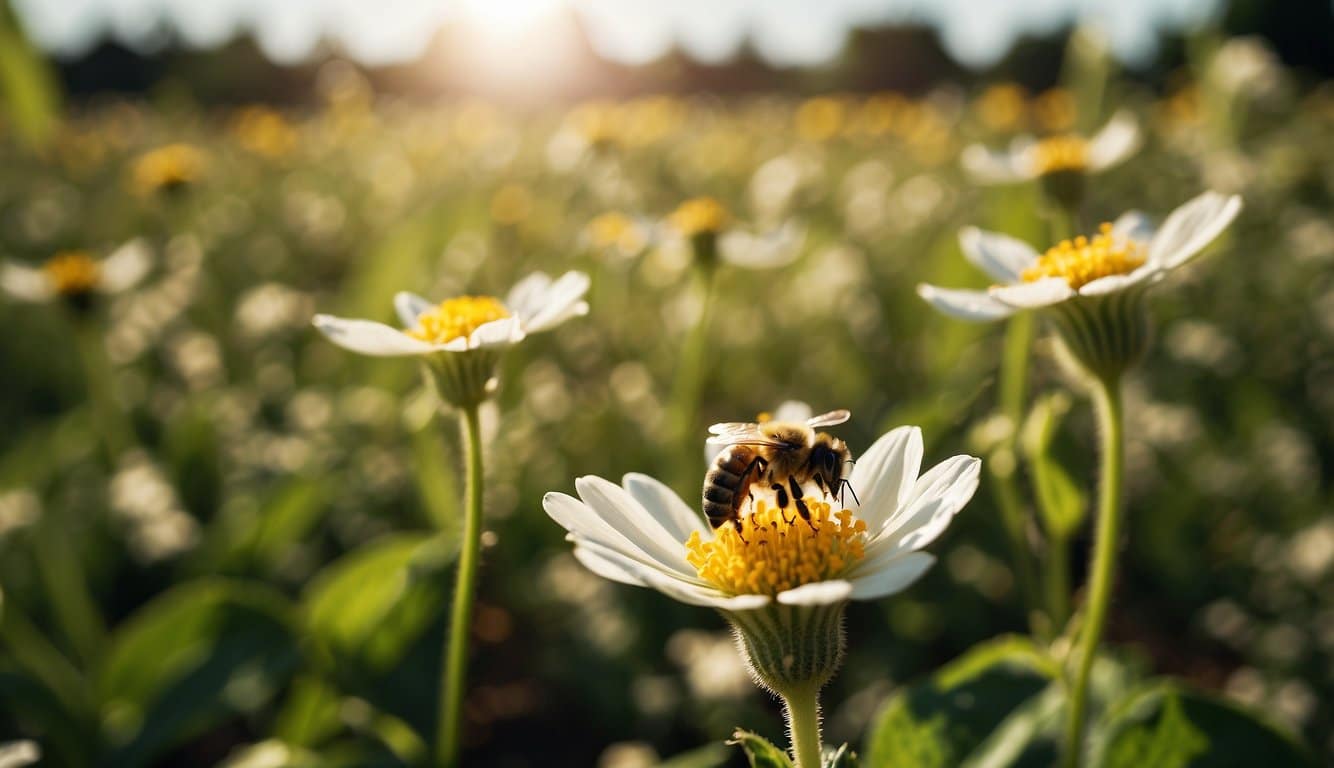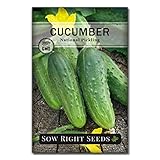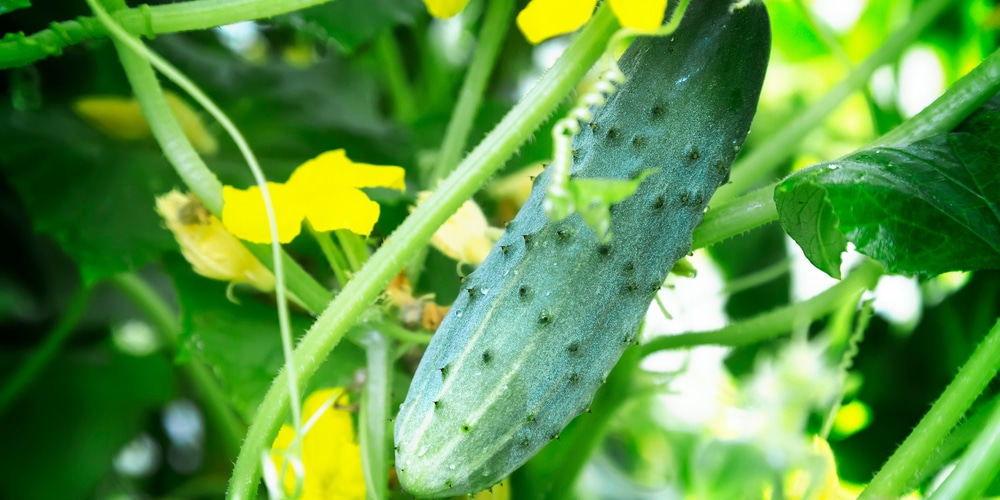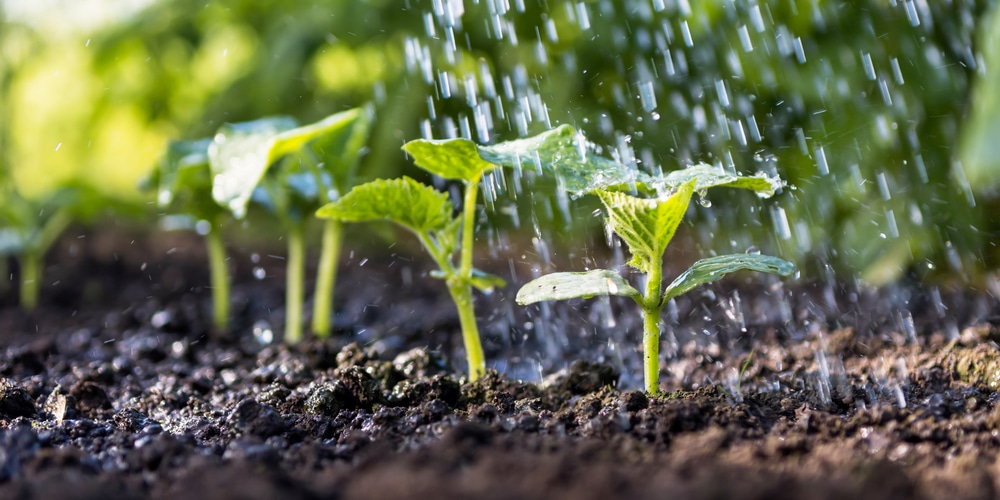Pollinating cucumbers is an essential process that can vastly improve the yield of your plants.
As cucumbers have both male and female flowers, successful pollination is necessary for fruit development.
In many gardens, bees and other pollinators naturally carry out this task. However, if you notice a lower-than-expected fruit set or your gardening space lacks sufficient pollinators, you might need to take matters into your own hands.
Understanding the difference between the flowers is the first step in hand pollination.
Male flowers, which release pollen, usually appear first on the plant and are attached by a slim stem.
Female flowers, which can be identified by a miniature fruit-shaped swelling at their base, are ready to receive pollen.
By ensuring that pollen is transferred from male to female flowers, you can increase your cucumber harvest.
Even if you’re not an expert gardener, learning to pollinate cucumbers is a straightforward process that can be rewarding both as an activity and for the bountiful crop it can produce.
To assist in pollinating cucumbers, a variety of methods and techniques can be employed to mimic the natural process and achieve successful pollination.
Cucumber Pollination: 101
Cucumber pollination is essential for fruit formation and is influenced by plant type and environmental factors.
Requirements for Cucumber Pollination
For successful pollination, cucumbers need both male and female flowers; the male’s pollen must reach the female’s stigma.
Bees are the primary pollinators, as they transfer pollen while searching for nectar.
Yet, you can hand-pollinate by carefully transferring pollen if bees are scarce.
Optimal pollination occurs during warm, dry weather, as rainy or cold conditions can impede bee activity and pollen viability.
Types of Cucumber Plants
Monoecious cucumbers have both male and female flowers on the same plant, necessitating pollinators or hand-pollination for fruit development.
In contrast, gynoecious types primarily produce female flowers and rely on a pollenizer—a plant that supplies male flowers for pollination.
Some modern cucumber varieties are parthenocarpic, thriving without pollination and producing seedless fruits which are often grown in greenhouses.
Selecting the right type for your garden depends on your pollination method preference and growing conditions.
Methods for Pollinating Cucumbers
Effective pollination is crucial for fruit production in cucumber plants. Here, you’ll explore two reliable methods: hands-on pollination and attracting natural pollinators.
Hand Pollination Method
To hand pollinate cucumbers, you’ll need to understand the difference between male and female flowers.
Male flowers release pollen and usually appear first in the growing season. They can be identified by their slender stems.
Female flowers, necessary for fruit formation, have a swollen ovary at their base resembling a miniature cucumber.
- Step 1: Identify male and female flowers.
- Step 2: Collect pollen from the male flower. You can do this with a small, clean brush or by removing the petals to expose the pollen-laden anther.
- Step 3: Transfer pollen to the stigma in the center of the female flower. Ensure gentle contact to mimic the natural pollination process.
Encouraging Natural Pollinators
Creating a hospitable environment for bees and other pollinators is a more hands-off approach but equally important for cucumber pollination.
- Plant flowers: Intersperse your garden with blooms that attract pollinators.
- Provide water: A shallow water source can help pollinators stay hydrated.
- Avoid pesticides: Opt for natural pest control methods to protect these beneficial insects.
Optimizing Conditions for Pollination
Achieving successful cucumber pollination hinges on creating the right environment and ensuring your plants are healthy.
By focusing on these two critical areas, you can maximize your potential for a fruitful cucumber harvest.
Ideal Environmental Conditions
Optimal pollination conditions for cucumbers include ample sunlight and moderate temperatures.
Aim for a location that receives at least 6 hours of direct sunlight daily.
Temperature plays a crucial role as well; cucumbers prosper in environments where daytime temperatures range between 70 °F to 95 °F (21°C to 35°C) and nighttime temperatures do not drop below 60 °F (15.5°C).
Humidity is another important factor, with a relative humidity level of about 40 to 70% being conducive for pollination.
Additionally, calm weather is preferred because strong winds can deter pollinators and disrupt the transfer of pollen.
Maintaining Plant Health
Ensuring plant health is paramount for effective pollination.
Regularly inspect your cucumber plants for signs of distress, which could indicate an issue that may affect pollination.
- Watering: Provide consistent moisture, ideally one inch of water per week, depending on climate conditions. Avoid overwatering which can lead to root rot, while under-watering can stress the plants, reducing their capacity to flower and therefore pollinate.
- Nutrition: Feed your plants with a balanced fertilizer. A nitrogen-phosphorus-potassium (N-P-K) ratio of 1-2-3 is suitable. Over-fertilization, especially with nitrogen, can lead to lush foliage at the expense of flowering and fruit setting.
- Disease and Pest Control: Monitor for common issues such as powdery mildew and cucumber beetles. Employ preventive measures like crop rotation, and if intervention is necessary, opt for organic pesticides or fungicides.
Frequently Asked Questions
Effective cucumber pollination is crucial for fruit development. Here’s a brief guide addressing common queries on the topic.
What techniques can be used to hand-pollinate cucumber plants?
To hand-pollinate cucumbers, you can use a small brush or cotton swab to transfer pollen from male to female flowers.
What can be done to attract bees and other pollinators to cucumber gardens?
Attracting pollinators such as bees can be achieved by planting flower varieties they favor and by avoiding the use of pesticides in your cucumber garden.
How can one determine if a cucumber flower is male or female?
Male cucumber flowers have stamens that produce pollen, while female flowers can be identified by their stigma and a small swelling at the base that will become the cucumber.
What are the signs that a cucumber flower has been successfully pollinated?
A successfully pollinated cucumber flower will begin to wilt a full day after pollination and will be followed by fruit development at the base of the female flower.
Which pollinators are most effective for cucumber plants?
Bees are among the most effective pollinators for cucumbers, as they are adept at transferring pollen between male and female flowers.
Why are there flowers on my cucumber plants but no fruit development?
Lack of fruit development despite the presence of flowers could be due to inadequate pollination or plant stress.
Ensuring proper pollination and plant health is essential for fruit development.
Last update on 2025-04-18 / Affiliate links / Images from Amazon Product Advertising API





